
LOADING ...
In response to evolving domestic opinion, eMedals Inc has made the conscious decision to remove the presentation of German Third Reich historical artifacts from our online catalogue. For three decades, eMedals Inc has made an effort to preserve history in all its forms. As historians and researchers, we have managed sensitive articles and materials with the greatest of care and respect for their past and present social context. We acknowledge the growing sentiments put forth by the Canadian public and have taken proactive actions to address this opinion.
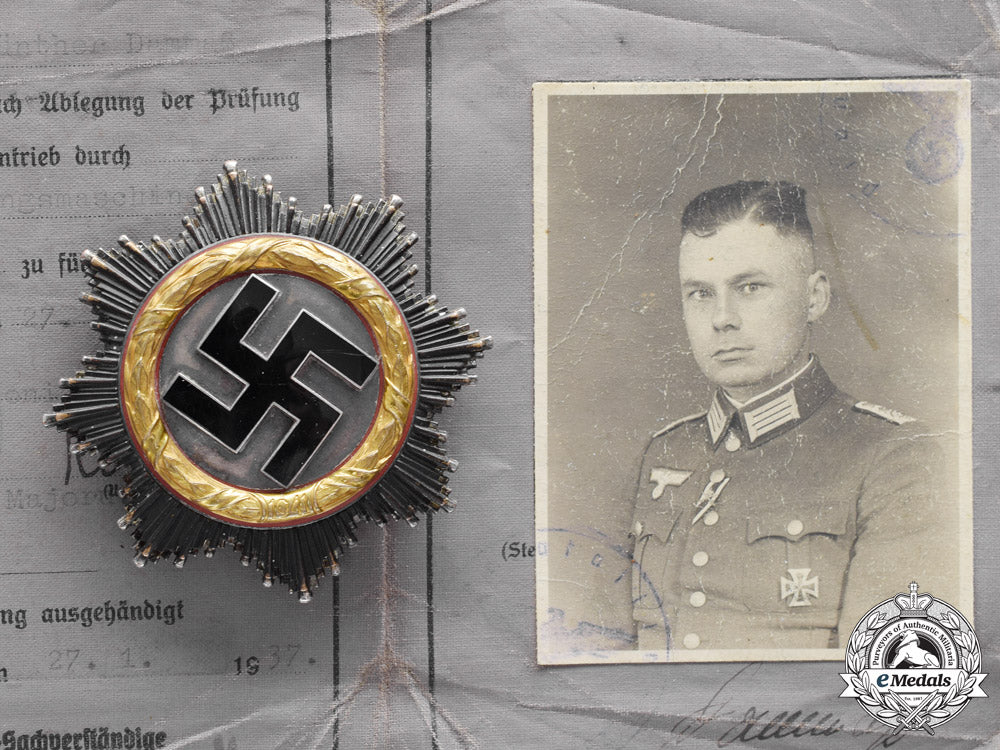
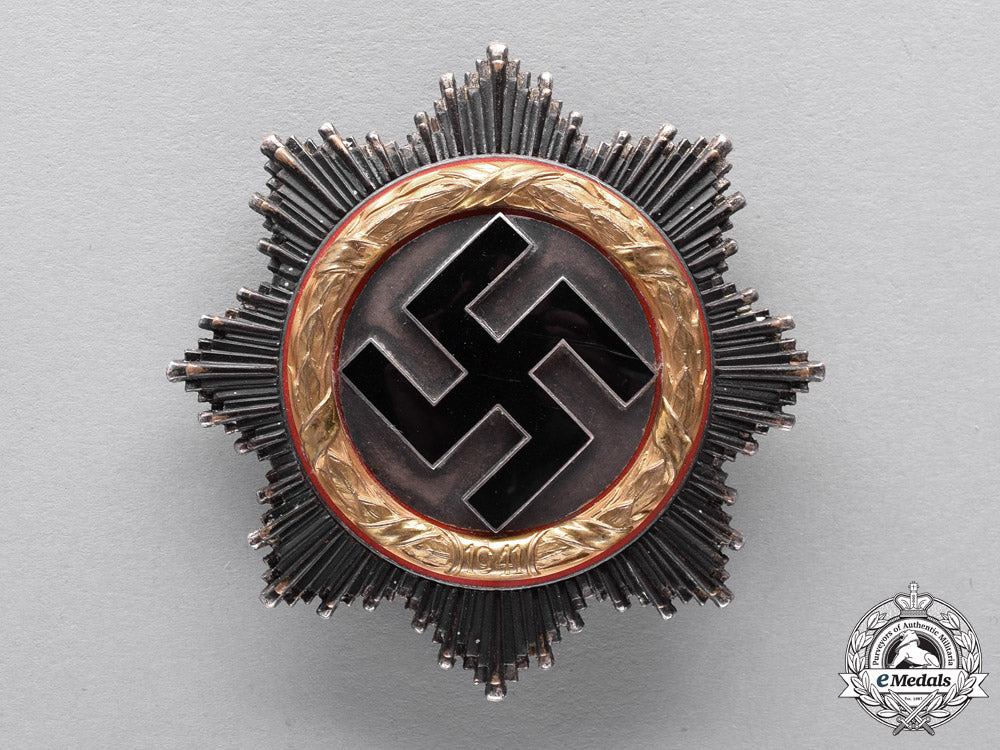
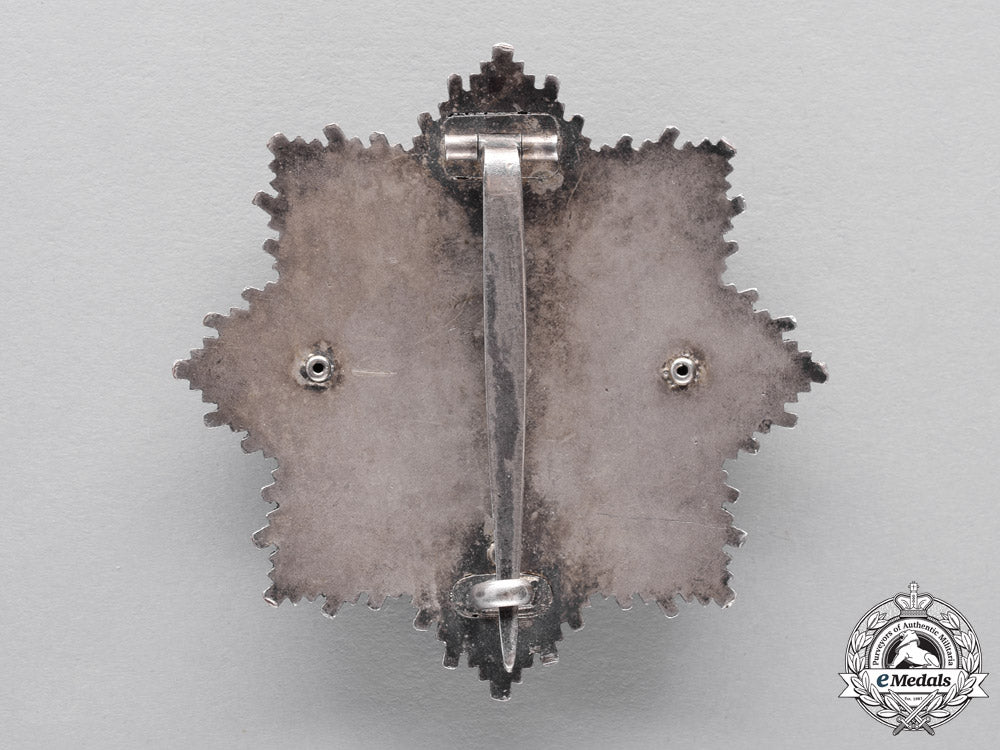
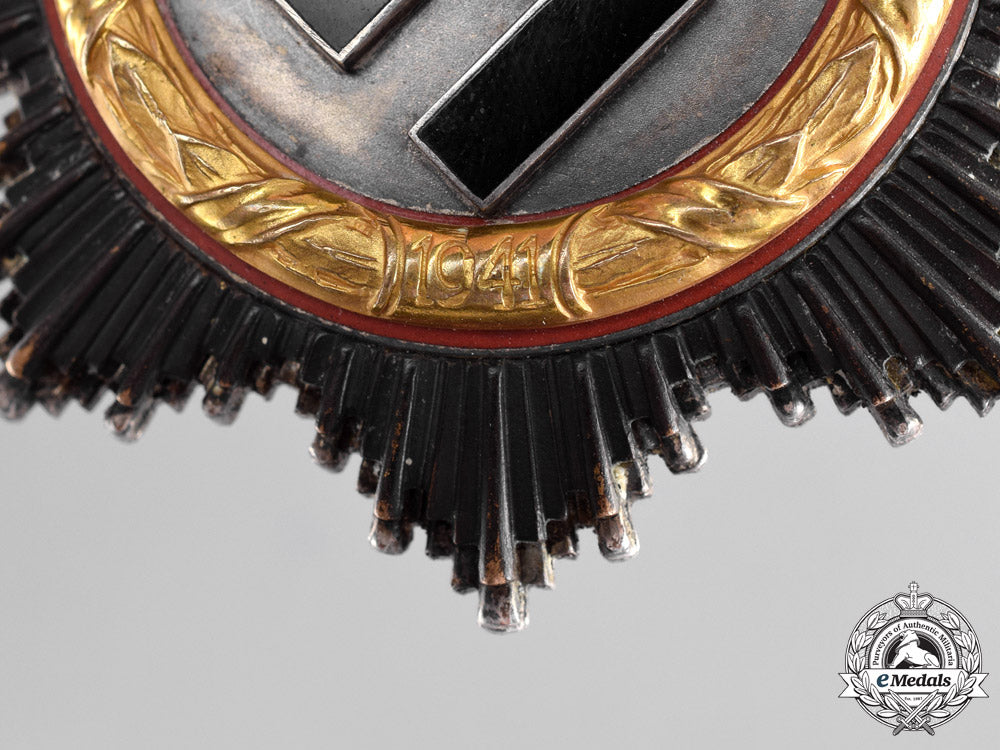
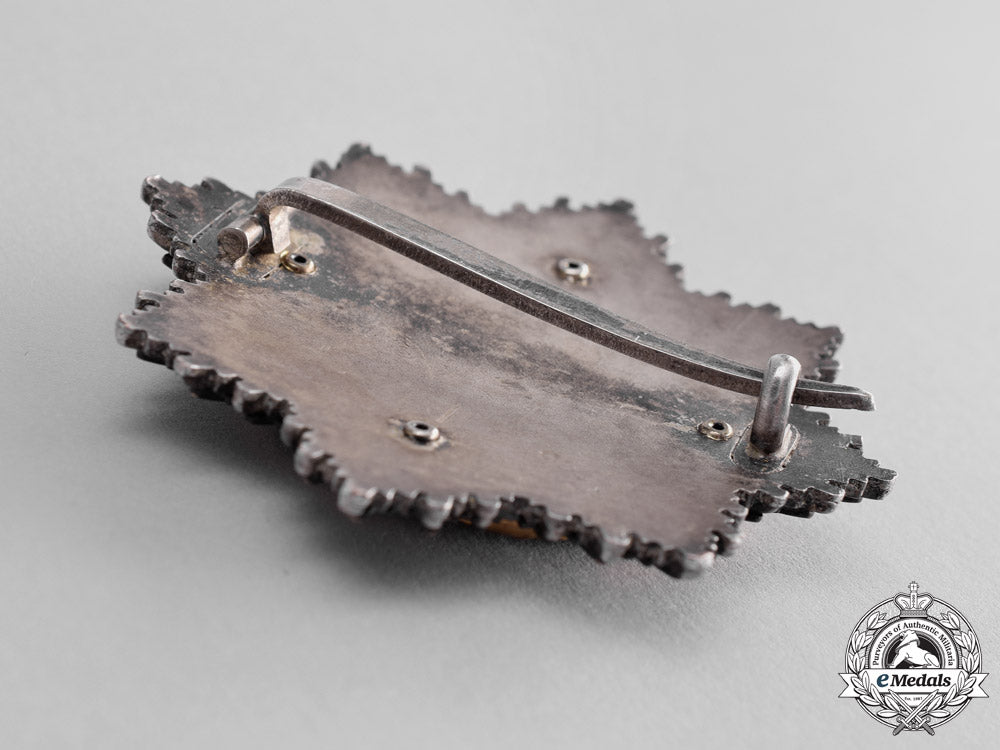
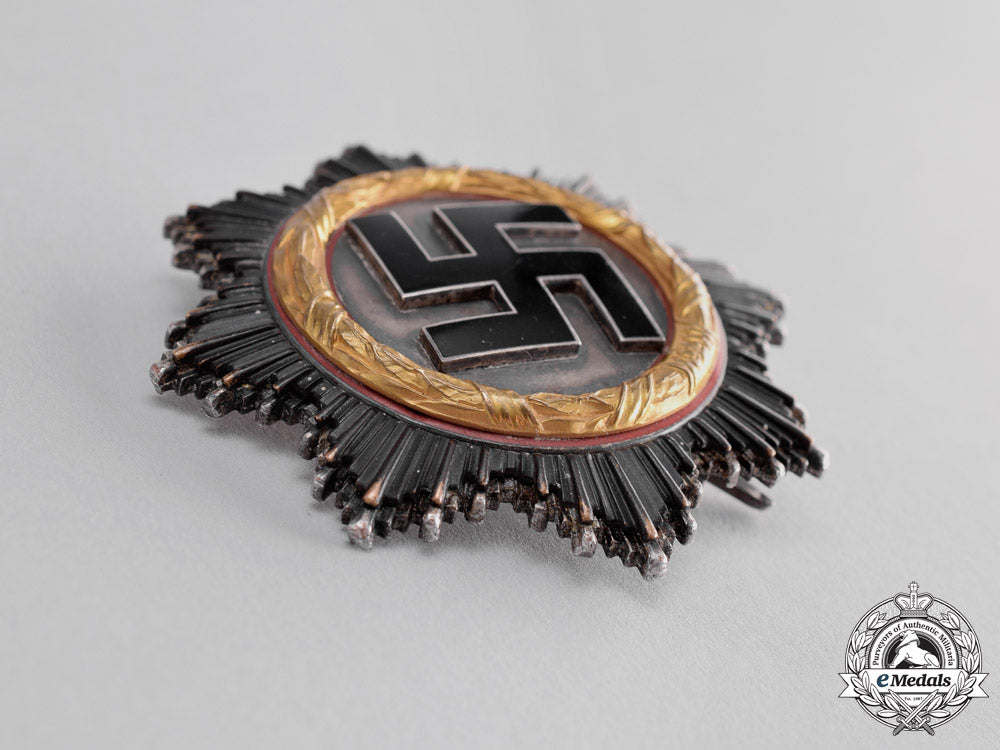
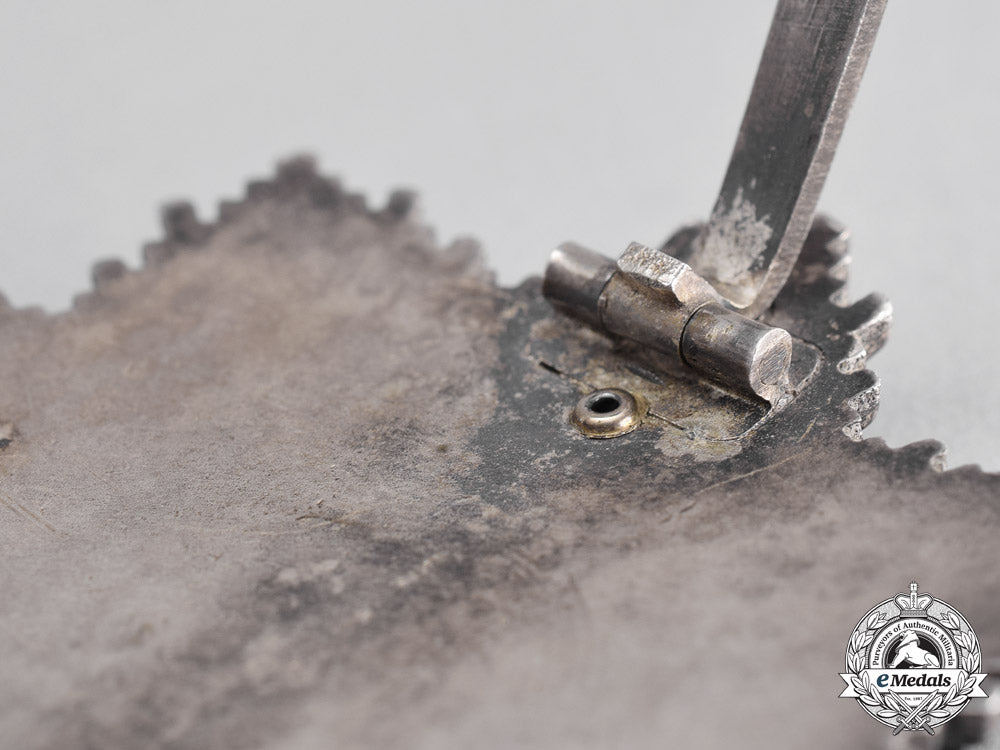
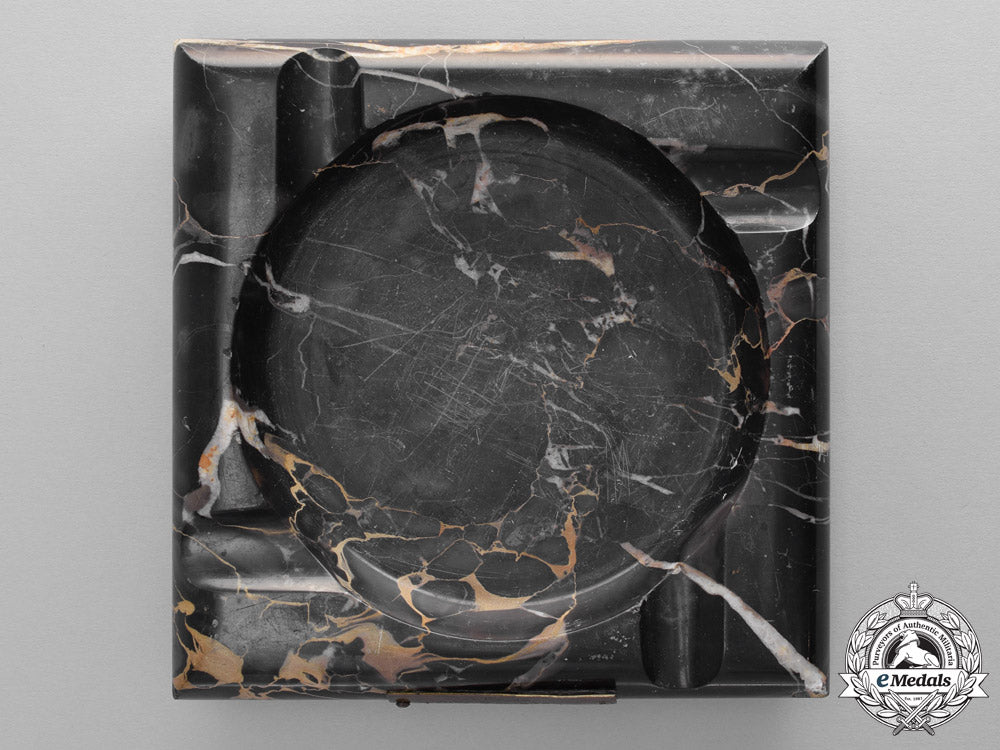
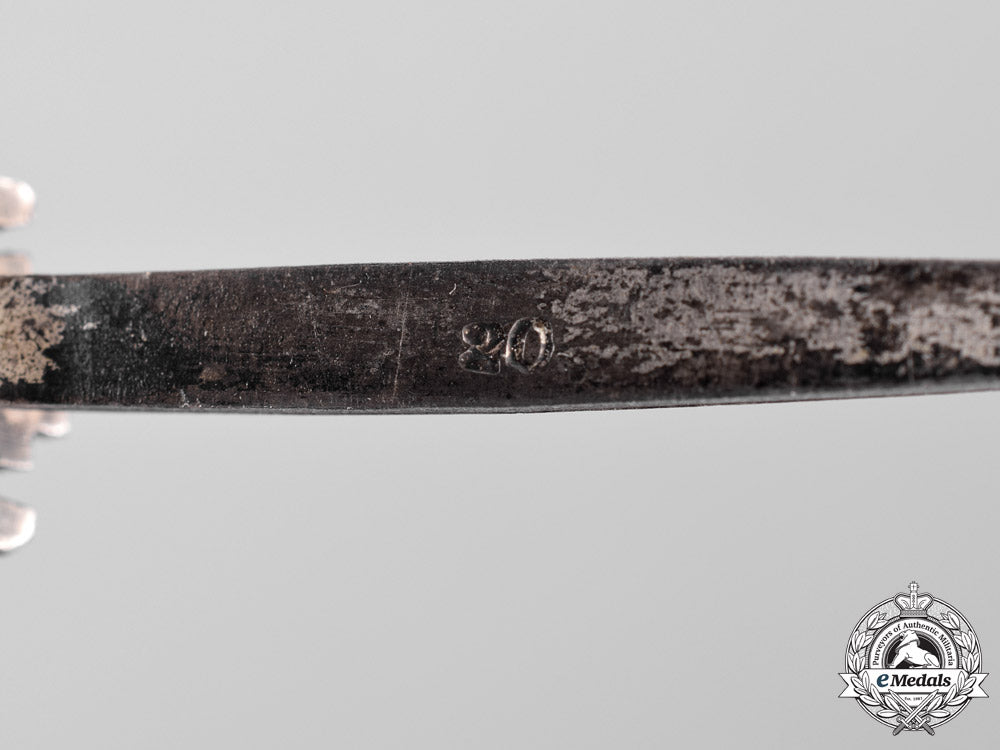
Germany. A Dkig Group With Documents To Oberst Günther Dammaß, Pionier Battalion 60
Germany. A Dkig Group With Documents To Oberst Günther Dammaß, Pionier Battalion 60
SKU: ITEM: G35853
Current Bid:
Your Max Bid:
Bid History:
Time Remaining:
Couldn't load pickup availability
Shipping Details
Shipping Details
eMedals offers rapid domestic and international shipping. Orders received prior to 12:00pm (EST) will be shipped on the same business day.* Orders placed on Canadian Federal holidays will be dispatched the subsequent business day. Courier tracking numbers are provided for all shipments. All items purchased from eMedals can be returned for a full monetary refund or merchandise credit, providing the criteria presented in our Terms & Conditions are met. *Please note that the addition of a COA may impact dispatch time.
Shipping Details
eMedals offers rapid domestic and international shipping. Orders received prior to 12:00pm (EST) will be shipped on the same business day.* Orders placed on Canadian Federal holidays will be dispatched the subsequent business day. Courier tracking numbers are provided for all shipments. All items purchased from eMedals can be returned for a full monetary refund or merchandise credit, providing the criteria presented in our Terms & Conditions are met. *Please note that the addition of a COA may impact dispatch time.
Description
Description
The collection consists of:
A German Cross in Gold with preliminary award certificate (136x198mm, fine); an ashtray, first prize for Officer’s marksmanship competition; a promotion to Hauptmann certificate to Max Dammaß (213x358mm, very fine); a Knight’s Cross of the House Order of Hohenzollern certificate (207x302mm, very fine); a Wound Badge 1914 in Silver certificate (159x204mm, very fine); a preliminary Iron Cross 1914 1st Class certificate (155x205mm, fine); a preliminary Iron Cross 1914 2nd Class certificate (155x203mm, very fine); a Silesian Eagle 1st Grade certificate (174x110mm, very fine); a Silesian Eagle 2nd Grade certificate (179x117mm, near very fine); a certificate backdating the appointment to Officer (145x179mm, fair); a 1939 Christmas vacation permission certificate (210x149mm, near extremely fine); a 1937 military driver’s licence for cars (103x150mm, fine); a 1927 driver’s licence for motorbikes (98x151mm, fair); a 1922 driver’s licence for small motorbikes (100x151mm, better than very fine).
1) The German Cross in Gold is a fine quality manufacture and extremely well preserved light version by a desirable maker; with its trademark four hollow rivets on the reverse; the cross consisting of a double-overlaid sunburst pattern with eight points; the center with a black enameled rotated (mobile) swastika, with the enamels well preserved without chipping of any kind and only minor contact marks; within a stamped gilded circular wreath impressed with oak leaves, ribbons, and the introduction year “1941”; the inner and outer sides of the wreath feature a thin red enameled ring with a silver core in the middle; the reverse plain but with a broad vertical pinback with a functional barrel hinge and a thick, slightly rounded catch; marked “20” for “Fritz Zimmermann, Stuttgart” on the reverse of the pin; measuring 62.91 mm x 62.94 mm; weighing 45.9 grams. It is accompanied by a certificate of authenticity by Detlev Niemann.
2) The preliminary award certificate is named to Oberstleutnant Dammaß. Due to repairs the name of the unit is illegible. Dammaß commanded Pionier Battalion 60 at the same. The certificate is dated to September 4, 1942 and carries a strong signature in black ink by Generalfeldmarschall Wilhelm Keitel.
3) The ashtray commemorates the victor of an Officer’s marksmanship competition of Pionier Battalion 23 in November of 1937, constructed of polished obsidian or onyx mineral, that is hollowed-out to allow ashes to collect, with four cut-outs to allow cigars or cigarettes to be rested. On one of the sides is a small bronze plaque attached via a single rivet (the other is missing), that reads “1. Preis Off(izier-)Schießen 18.11.1937 P.B.23”, with a white woolen underside. It measures 152 mm x 152 mm.
4) The promotion certificate to Hauptmann (Captain) is named to Max Dammaß of the 4th Baden Infantry Regiment “Prinz Wilhelm” No. 112. Presumably he was a close relative of Günther Dammaß, possibly his father. It is dated to January 27, 1899 and carries a strong signature in black ink by Emperor Wilhelm II.
5) The Knight’s Cross of the House Order of Hohenzollern certificate is named to Lieutenant Günther Dammaß of the Magdeburgischen Pionier Battalion No. 4. It is dated to Berlin on May 21, 1918. The signature is illegible.
6) The Wound Badge in Silver certificate is named to Lieutenant Günther Dammaß of the 1st Company of Pionier Battalion No. 4 for being wounded four times. Interestingly, it is referred to as a “white” wound badge. It is dated to July 21, 1918 and signed by the Commander, a Hauptmann, the name is illegible.
7) The preliminary Iron Cross 1st Class certificate is named to Lieutenant Günther Dammaß of the 1st Company of Pionier Battalion No. 4. It is dated to November 8, 1916 and signed by the same Hauptmann who signed the Wound Badge certificate.
8) The preliminary Iron Cross 2nd Class certificate is named to Fahnenjunker (Officer Cadet) and Unteroffizier (NCO) Dammaß of the 1st Company of Pionier Battalion No. 4. The document is dated to January 27, 1915. It is signed in pencil by the Commander of Sappers in the 4th Army Corps, a Major, the name is illegible.
9) The Silesian Eagle 1st Grade certificate is named to Lieutenant Dammaß of the 5th Company of Reichswehr Pionier Battalion No. 6. The document is dated to Ratibor (present-day Racibórz, southern Poland) on November 6, 1919. It is signed by a Hauptmann and Company Leader, the name is illegible.
10) The Silesian Eagle 2nd Grade certificate has the same details, except that it is dated to September 19, 1919.
11) The certificate backdating the appointment to Officer is dated to June 24, 1918. It states that Dammaß’s promotion to Officer is now treated as being effective May 22, 1914.
12) The vacation permission certificate is named to Major Dammaß of Pionier Battalion 60. It states that he may take a holiday from December 16 to 27, 1939 in Berlin-Charlottenburg. It is dated to December 14, 1939.
13) The military driver’s licence is named to Hauptmann Dammaß of the 2nd Company of Pionier Battalion 23. It states that Dammaß is eligible to drive cars of classes 1 and 3. It is dated to January 27, 1937. The picture of Dammaß shows him wearing the Iron Cross 1914 1st Class and the ribbon to the House Order of Hohenzollern.
14) The second driver’s licence is dated to June 22, 1927 and states that Dammaß is eligible to drive motorbikes of class 1.
15) The third driver’s licence is dated to July 22, 1922. It is a licence for small motorbikes.
Footnote: Very little is known about the life of Günther Karl Friedrich Dammaß. He was born on August 22, 1896 in Thorn (present-day Toruń, northern Poland). He took part in the First War, being wounded at least four times. At the end of the war Dammaß was of Lieutenant rank. He went on to fight in a Freikorps in the Silesian Uprisings in 1919. There is almost no information about his life during the interwar period. Dammaß was promoted to Major on March 1, 1938. He was awarded the German Cross in Gold, his highest honour, on September 4, 1942 while commanding Pionier Battalion 60. The battalion was part of the 14th Army Corps which saw action in Poland, France, Romania, Serbia, and southern Russia. It was destroyed in Stalingrad. Dammaß was promoted to Oberst (Colonel) on October 1, 1942. He survived the war and died on August 24, 1983
Description
The collection consists of:
A German Cross in Gold with preliminary award certificate (136x198mm, fine); an ashtray, first prize for Officer’s marksmanship competition; a promotion to Hauptmann certificate to Max Dammaß (213x358mm, very fine); a Knight’s Cross of the House Order of Hohenzollern certificate (207x302mm, very fine); a Wound Badge 1914 in Silver certificate (159x204mm, very fine); a preliminary Iron Cross 1914 1st Class certificate (155x205mm, fine); a preliminary Iron Cross 1914 2nd Class certificate (155x203mm, very fine); a Silesian Eagle 1st Grade certificate (174x110mm, very fine); a Silesian Eagle 2nd Grade certificate (179x117mm, near very fine); a certificate backdating the appointment to Officer (145x179mm, fair); a 1939 Christmas vacation permission certificate (210x149mm, near extremely fine); a 1937 military driver’s licence for cars (103x150mm, fine); a 1927 driver’s licence for motorbikes (98x151mm, fair); a 1922 driver’s licence for small motorbikes (100x151mm, better than very fine).
1) The German Cross in Gold is a fine quality manufacture and extremely well preserved light version by a desirable maker; with its trademark four hollow rivets on the reverse; the cross consisting of a double-overlaid sunburst pattern with eight points; the center with a black enameled rotated (mobile) swastika, with the enamels well preserved without chipping of any kind and only minor contact marks; within a stamped gilded circular wreath impressed with oak leaves, ribbons, and the introduction year “1941”; the inner and outer sides of the wreath feature a thin red enameled ring with a silver core in the middle; the reverse plain but with a broad vertical pinback with a functional barrel hinge and a thick, slightly rounded catch; marked “20” for “Fritz Zimmermann, Stuttgart” on the reverse of the pin; measuring 62.91 mm x 62.94 mm; weighing 45.9 grams. It is accompanied by a certificate of authenticity by Detlev Niemann.
2) The preliminary award certificate is named to Oberstleutnant Dammaß. Due to repairs the name of the unit is illegible. Dammaß commanded Pionier Battalion 60 at the same. The certificate is dated to September 4, 1942 and carries a strong signature in black ink by Generalfeldmarschall Wilhelm Keitel.
3) The ashtray commemorates the victor of an Officer’s marksmanship competition of Pionier Battalion 23 in November of 1937, constructed of polished obsidian or onyx mineral, that is hollowed-out to allow ashes to collect, with four cut-outs to allow cigars or cigarettes to be rested. On one of the sides is a small bronze plaque attached via a single rivet (the other is missing), that reads “1. Preis Off(izier-)Schießen 18.11.1937 P.B.23”, with a white woolen underside. It measures 152 mm x 152 mm.
4) The promotion certificate to Hauptmann (Captain) is named to Max Dammaß of the 4th Baden Infantry Regiment “Prinz Wilhelm” No. 112. Presumably he was a close relative of Günther Dammaß, possibly his father. It is dated to January 27, 1899 and carries a strong signature in black ink by Emperor Wilhelm II.
5) The Knight’s Cross of the House Order of Hohenzollern certificate is named to Lieutenant Günther Dammaß of the Magdeburgischen Pionier Battalion No. 4. It is dated to Berlin on May 21, 1918. The signature is illegible.
6) The Wound Badge in Silver certificate is named to Lieutenant Günther Dammaß of the 1st Company of Pionier Battalion No. 4 for being wounded four times. Interestingly, it is referred to as a “white” wound badge. It is dated to July 21, 1918 and signed by the Commander, a Hauptmann, the name is illegible.
7) The preliminary Iron Cross 1st Class certificate is named to Lieutenant Günther Dammaß of the 1st Company of Pionier Battalion No. 4. It is dated to November 8, 1916 and signed by the same Hauptmann who signed the Wound Badge certificate.
8) The preliminary Iron Cross 2nd Class certificate is named to Fahnenjunker (Officer Cadet) and Unteroffizier (NCO) Dammaß of the 1st Company of Pionier Battalion No. 4. The document is dated to January 27, 1915. It is signed in pencil by the Commander of Sappers in the 4th Army Corps, a Major, the name is illegible.
9) The Silesian Eagle 1st Grade certificate is named to Lieutenant Dammaß of the 5th Company of Reichswehr Pionier Battalion No. 6. The document is dated to Ratibor (present-day Racibórz, southern Poland) on November 6, 1919. It is signed by a Hauptmann and Company Leader, the name is illegible.
10) The Silesian Eagle 2nd Grade certificate has the same details, except that it is dated to September 19, 1919.
11) The certificate backdating the appointment to Officer is dated to June 24, 1918. It states that Dammaß’s promotion to Officer is now treated as being effective May 22, 1914.
12) The vacation permission certificate is named to Major Dammaß of Pionier Battalion 60. It states that he may take a holiday from December 16 to 27, 1939 in Berlin-Charlottenburg. It is dated to December 14, 1939.
13) The military driver’s licence is named to Hauptmann Dammaß of the 2nd Company of Pionier Battalion 23. It states that Dammaß is eligible to drive cars of classes 1 and 3. It is dated to January 27, 1937. The picture of Dammaß shows him wearing the Iron Cross 1914 1st Class and the ribbon to the House Order of Hohenzollern.
14) The second driver’s licence is dated to June 22, 1927 and states that Dammaß is eligible to drive motorbikes of class 1.
15) The third driver’s licence is dated to July 22, 1922. It is a licence for small motorbikes.
Footnote: Very little is known about the life of Günther Karl Friedrich Dammaß. He was born on August 22, 1896 in Thorn (present-day Toruń, northern Poland). He took part in the First War, being wounded at least four times. At the end of the war Dammaß was of Lieutenant rank. He went on to fight in a Freikorps in the Silesian Uprisings in 1919. There is almost no information about his life during the interwar period. Dammaß was promoted to Major on March 1, 1938. He was awarded the German Cross in Gold, his highest honour, on September 4, 1942 while commanding Pionier Battalion 60. The battalion was part of the 14th Army Corps which saw action in Poland, France, Romania, Serbia, and southern Russia. It was destroyed in Stalingrad. Dammaß was promoted to Oberst (Colonel) on October 1, 1942. He survived the war and died on August 24, 1983









You May Also Like
Germany, Third Reich. A Mixed Lot of Uniform Insignia
G59693
Germany, SS. A Set of Waffen-SS Legal Service Obersturmführer Shoulder Boards
G59692
Germany, Wehrmacht. A Spanish Cross in Gold, Exhibition Example by Rudolf Souval, c. 1960
G59688
Germany, Third Reich. An Order of the German Eagle, II Class Breast Star, by Gebrüder Godet
G59687
Slovakia, First Republic. A Rare and Mint Freiwillige Schutzstaffel Cap Insignia, Third Pattern, German-Made by Augustin Hicke
EU23583
-
Germany, Third Reich. A Mixed Lot of Uniform Insignia
G59693
Add to CartRegular price $225 USDRegular price $0 USD Sale price $225 USDUnit price / per -
Germany, SS. A Set of Waffen-SS Legal Service Obersturmführer Shoulder Boards
G59692
Add to CartRegular price $485 USDRegular price $0 USD Sale price $485 USDUnit price / per -
Germany, Wehrmacht. A Spanish Cross in Gold, Exhibition Example by Rudolf Souval, c. 1960
G59688
Add to CartRegular price $650 USDRegular price $0 USD Sale price $650 USDUnit price / per -
Germany, Third Reich. An Order of the German Eagle, II Class Breast Star, by Gebrüder Godet
G59687
Add to CartRegular price $2,650 USDRegular price $0 USD Sale price $2,650 USDUnit price / per -
Slovakia, First Republic. A Rare and Mint Freiwillige Schutzstaffel Cap Insignia, Third Pattern, German-Made by Augustin Hicke
EU23583
Add to CartRegular price $2,450 USDRegular price $0 USD Sale price $2,450 USDUnit price / per
Do you have a similar item you are interested in selling?
Please complete the form and our client care representatives will contact you.
Sell Item






















